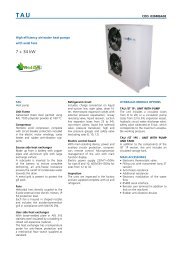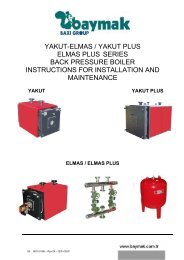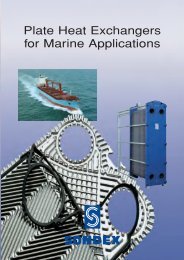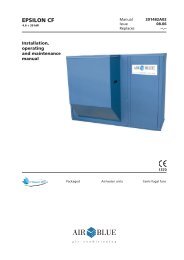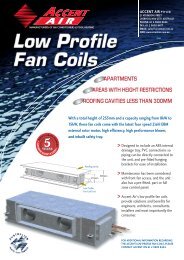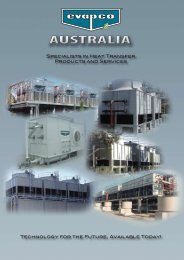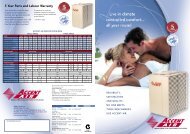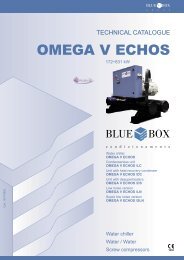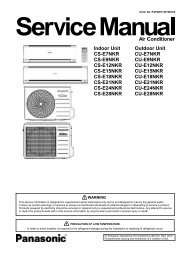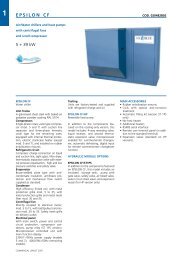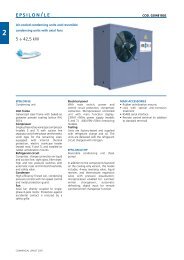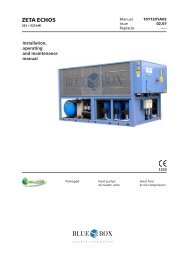KAPPA V ECHOS AC IOM.pdf - Industrial Air
KAPPA V ECHOS AC IOM.pdf - Industrial Air
KAPPA V ECHOS AC IOM.pdf - Industrial Air
You also want an ePaper? Increase the reach of your titles
YUMPU automatically turns print PDFs into web optimized ePapers that Google loves.
Rubber/metal anti-vibration<br />
isolator<br />
Designed to reduce the vibration.<br />
6.2.2 Spring Anti-Vibration Isolators<br />
6.3 WATER PIPING CONNECTIONS<br />
Figure 5<br />
Unit water pipework must be installed in accordance with national and local regulation and codes.<br />
Follow the recommendations below when designing the water piping circuit (refer to the diagrams included in this<br />
manual).<br />
- Piping should be connected to the unit with flexible joints, to avoid vibration transmission and allow for thermal<br />
expansion (the same procedure should be adopted for the circulating pumps).<br />
The following devices should be located on the piping system:<br />
- Isolating/regulating valves, temperature gauges or thermometer pockets, pressure gauges or binder points<br />
required for servicing operations.<br />
- Serviceable mesh strainer, with a filtration level no larger than 1mm, located on the unit inlet to prevent debris<br />
from entering the heat exchangers.<br />
- Vent valves, to be installed in the upper parts of the circuit, for air bleeding.<br />
- Expansion device with accessories for circuit pressurisation, water thermal expansion compensation and system<br />
filling.<br />
- Unload valve and if necessary drainage tank for circuit emptying during maintenance and seasonal stop.<br />
Blue Box 24<br />
Figure 4<br />
Anti-Vibration Isolators with cylindrical springs are recommended to reduce any mechanical and sound vibration.<br />
Each isolator has a code which identifies the maximum permitted load.<br />
When installing spring Anti-Vibration Isolators, it is compulsory to carefully follow all recommendations and assembly<br />
instructions. The dimensional drawing, enclosed in the machine, shows the footprint with the position and weight<br />
of each isolator.<br />
Standard spring antivibration<br />
isolators<br />
The isolator is fixed to the<br />
unit's baseframe with a nut<br />
and two bolts and washers.<br />
Spring anti-vibration<br />
isolators for heavy<br />
loads<br />
The load of the unit is<br />
supported by the full<br />
surface of the isolators. The<br />
load is not exerted on the<br />
bolt.





